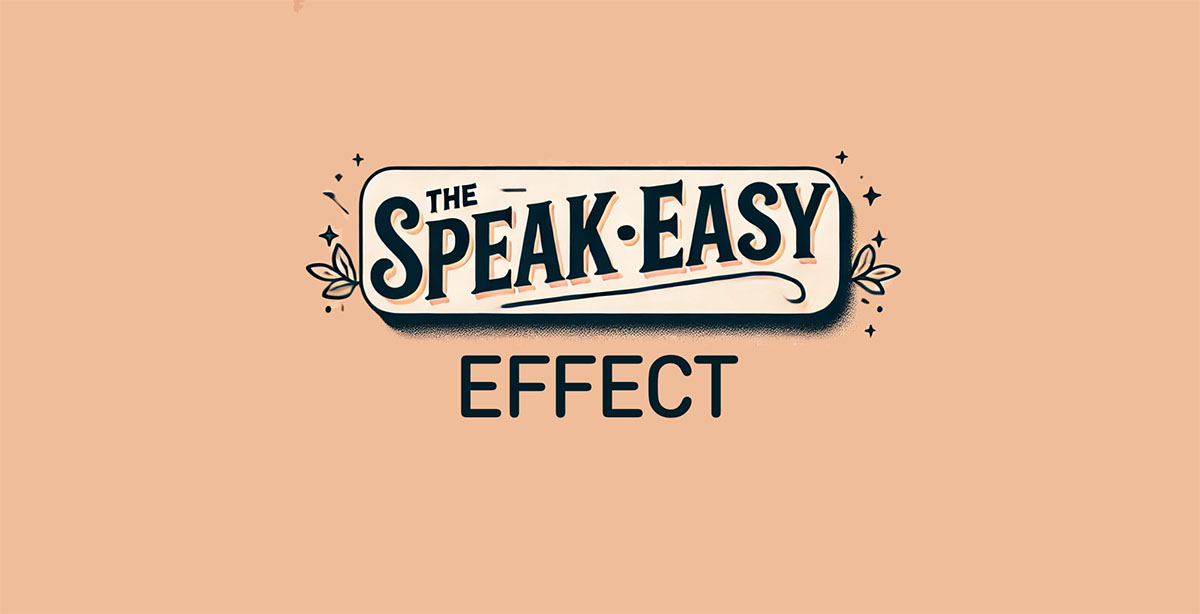The Speak-Easy Effect
Simple and easy-to-pronounce names stick in consumers' minds, creating stronger brand connections.
Turn insights into action with the Persuasive Patterns card deck
Master the science behind user motivation and create products that drive behavior.
Get your deck!The Speak-Easy Effect leverages our brain’s preference for simplicity and familiarity. Names that are easy to pronounce feel more familiar and trustworthy, which is deeply rooted in psychological principles like the fluency heuristic. According to Reber and Schwarz (1999), fluent stimuli are processed more easily and thus judged more positively, even in terms of truthfulness. The more fluent something feels to our brain, the more positive emotions it evokes.
This phenomenon also links to cognitive ease, where our brains conserve effort by favoring simpler tasks, including pronunciation.
The fluency heuristic suggests that people make judgments based on how easy or hard information is to process. When a word is easy to pronounce, it creates cognitive ease, which enhances positive associations like trust, likability, and even perceived quality. This is particularly effective because fluency influences value attribution – when a word flows easily, we subconsciously assign higher value to it as shown in Zajonc’s (1980) work on how repeated exposure increases preference.

The Speak-Easy Effect doesn’t just affect brand names; it can shape how consumers perceive product safety and effectiveness. Studies show that consumers are more likely to rate food additives as harmful if the names are difficult to pronounce. Research by Song and Schwarz (2007) supports this, indicating that difficult-to-pronounce items are perceived as riskier. This taps into risk aversion, where the unfamiliar feels risky, making harder-to-pronounce names seem less trustworthy. Conversely, easy-to-pronounce names reduce perceived risk.
The power of familiar language
This effect extends beyond product names to any form of communication, whether it’s branding, content, or even accents. Familiarity in language activates social proof, where opinions expressed in familiar or easily understood terms are perceived as more widely accepted. This is supported by Weaver et al. (2007), who found that repetition makes opinions seem more popular, reinforcing the link between fluency and social proof. This makes customers more likely to align with the opinion or message being conveyed.
For marketers and brand strategists, the Speak-Easy Effect can be enhanced by incorporating the framing effect – presenting information in a way that simplifies processing makes your message more persuasive. For example, using familiar phrases or language reduces cognitive load, leading to increased engagement. Additionally, the serial positioning effect suggests that simple and memorable names used at key points (e.g., start and end of an ad) can increase retention.
-
Keep it simple. Avoiding jargon ensures cognitive dissonance doesn’t occur, where overly complex words create discomfort and alienate your audience.
-
Choose memorable names. Easily pronounceable names lead to better recognition over recall – names that are easy to say stick better in memory.
-
Focus on familiarity. Using language and imagery familiar to your audience taps into the liking bias, building stronger relationships by reducing effort for the customer.
Beyond influencing trust and perceived value, the Speak-Easy Effect activates positive mimicry. When customers find a brand name easy to pronounce, they’re more likely to mention it in conversations, enhancing word-of-mouth marketing. Additionally, pronounceable names can spark the curiosity effect, drawing consumers to learn more because the name feels accessible and intriguing.
Potential limitations of the Speak-Easy Effect
While the benefits of the Speak-Easy Effect are clear, it’s worth noting that overly simple names may not always be the best choice. In some cases, more complex or unique names can stand out in a crowded market and may be more memorable because of their distinctiveness. Striking a balance between simplicity and uniqueness could be key, depending on the industry and the target audience.
Moreover, while fluent names generally inspire trust, brands in certain sectors (e.g., luxury or specialized technology) might benefit from more complex or exclusive-sounding names that signal expertise or exclusivity.
Applying the Speak-Easy Effect
To make the most of the Speak-Easy Effect, marketers can follow these steps:
-
Test for fluency. Before finalizing a brand name, conduct tests to see how easily consumers can pronounce and remember it. If they struggle with pronunciation, consider simplifying the name to make it more approachable.
-
Consider your industry. While simplicity is generally effective, think about whether your product or brand might benefit from a name that suggests sophistication or exclusivity.
-
Use familiar phrases in your messaging. Beyond brand names, simplifying your language in all forms of communication, from slogans to ad copy, can enhance engagement by reducing cognitive load for your audience.
What are examples of the Speak-Easy Effect in action?
-
Apple. The simplicity of the name “Apple” aligns with the Speak-Easy Effect. Its ease of pronunciation helps create familiarity, making it easier for consumers to associate the brand with innovation and quality.
-
Coca-Cola. The rhythmic, simple-to-say name taps into pattern recognition, making it not only memorable but also universally approachable, helping it build a global presence.
-
Google. The simplicity of the name contributes to its brand’s status and dominance in the market, making it feel ubiquitous and easy to remember.
The Speak-Easy Effect highlights how simplicity and familiarity in language influence consumer behavior and brand perception. As Zajonc (1980) pointed out, fluency can foster positive emotions even without conscious reasoning, making the Speak-Easy Effect a powerful tool. By leveraging psychological principles like cognitive ease and fluency, marketers can build stronger relationships with their audience. However, it’s important to remember that simplicity isn’t always the best choice in every scenario. For some brands, a more complex or distinctive name could create differentiation and appeal. Understanding your audience and industry will guide how best to apply the Speak-Easy Effect to your brand strategy.
Frequently Asked Questions
Does the Speak-Easy Effect work across different cultures and languages?
Yes, but pronunciation ease can vary across languages and cultures. What is simple in one language may be complex in another. Marketers need to consider linguistic and cultural contexts to ensure the name resonates globally while maintaining fluency.
Does simplicity in names work long-term?
Simplicity creates an immediate positive impact, but brands must maintain engagement over time with strong messaging, product quality, and customer experiences. While simple names help build familiarity, maintaining brand loyalty requires more than fluency.
How can brands balance simplicity with uniqueness?
The key is finding a balance. A name should be easy to pronounce but also distinct enough to stand out. Marketers can test potential names for both fluency and memorability to ensure they are not only approachable but also differentiated in the market.
Do individual differences affect how people respond to fluency?
Yes, factors like language proficiency, cognitive abilities, and even familiarity with certain terms can influence how people respond to easy-to-pronounce names. Testing across diverse consumer groups helps ensure broad appeal.
How does the Speak-Easy Effect apply in industries with complex terminology?
In industries like pharmaceuticals or technology, where complex language is common, brands can still apply the Speak-Easy Effect by simplifying non-essential terms, using easy-to-pronounce product names, and clearly explaining complex concepts to make them more accessible.
Can names be too simple?
Yes, oversimplification can reduce perceived value, especially in luxury or specialized markets. In these cases, a more complex or unique name may be needed to convey exclusivity or expertise while still ensuring it is not difficult to pronounce.
- Song & Schwarz (2007) If It’s Difficult to Pronounce, It Must Be Risky. Psychological Science.
- Zajonc, R. B. (1980). Feeling and thinking: Preferences need no inferences. American Psychologist, 35(2), 151–175.
- Weaver, K., Garcia, S. M., Schwarz, N., & Miller, D. T. (2007). Inferring the popularity of an opinion from its familiarity: A repetitive voice can sound like a chorus. Journal of Personality and Social Psychology, 92(5), 821–833.
- Reber, R., & Schwarz, N. (1999). Effects of perceptual fluency on judgments of truth. Consciousness and Cognition, 8(3), 338–342.
- The Speak-Easy Effect by Jerome Ribbot
- UX psychology: 6 essential principles for better UX design by Katryna Balboni
- Speak-Easy Effect by Frank Andres

